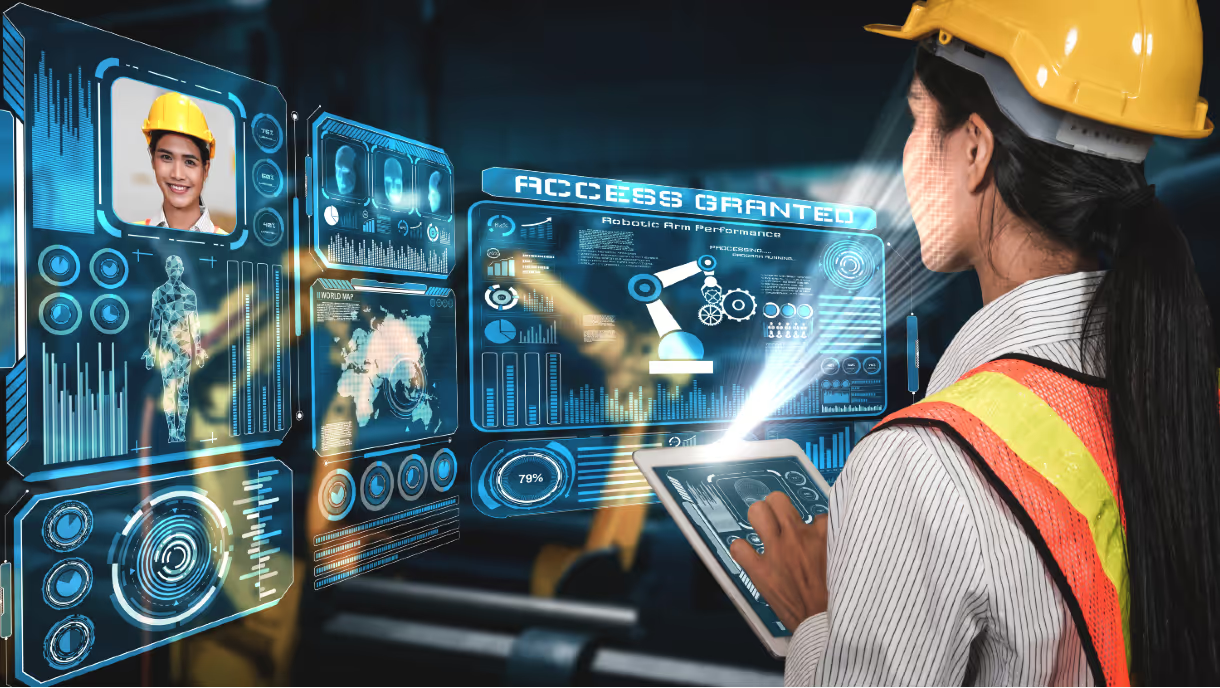15 Industries Using Facial Authentication for Security
Facial authentication is revolutionizing security and convenience across industries with up to 99.97% accuracy. From workplace attendance and factory access to online payments, border control, and healthcare check-ins, this contactless technology offers fast, secure, and user-friendly solutions. Its growing adoption in casinos, hotels, airports, and education showcases its versatility. As it continues to evolve, facial authentication is poised to power future innovations in smart cities, fraud prevention, and personalized experiences.

In our contemporary, fast-paced world, the need for security and convenience has reached a paramount status in nearly every facet of daily life. The advent of facial authentication, boasting an astonishing accuracy rate of up to 99.97%, stands as a transformative force sweeping industries worldwide.
This once futuristic concept, relegated to the realm of science fiction, has emerged as a tangible reality. It presents an unparalleled means to seamlessly and securely execute a multitude of tasks. Notably, recent years have witnessed a remarkable refinement in facial recognition systems. For instance, the National Institute of Standards and Technology (NIST) Face Recognition Vendor Test (FRVT) has demonstrated that the finest facial recognition algorithms can now achieve an accuracy rate surpassing 99%.
Facial authentication technology has transcended beyond merely unlocking smartphones. It is now integrated into various industries and provides enhanced safety, efficiency, and customer experiences.
This blog will explore the top 15 use cases for facial authentication. It showcases its versatility and potential to revolutionize the way we interact with the world around us.
1. Attendance
Facial authentication is transforming attendance tracking in the workplace. Unlike traditional methods that rely on physical identification or pin codes, this technology offers a contactless, accurate, and secure solution.
Employees can easily enroll with a photo, which the system then uses to verify their identity during clock-ins and outs. This technology helps prevent impersonation and buddy punching. It also helped reduce the risk of virus transmission in the era of the COVID-19 pandemic.
2. Factories
Factories are an ideal environment for facial authentication. This technology acts as an additional layer of security and control. By implementing facial recognition technology into machinery and specialized equipment, access is granted only to designated personnel.
This helps reduce the risk of unauthorized operation and can also be programmed with specific conditions, such as restricting machine operation to working hours. Integrating touchless, highly accurate facial authentication in factories not only improves productivity but also maintains safety standards for workers.
3. Healthcare
Facial authentication transforms the healthcare industry by simplifying check-in and check-out processes. This ultimately reduces staff workload and verifies patient identity in real-time without the need for paperwork or identification documents.
It also improves overall patient experience and prevents fraud. This contactless technology provides added protection against infectious diseases like COVID-19 and can help control access to specific areas of healthcare facilities.
4. Visitor Management Systems
Facial recognition technology is revolutionizing how visitors are managed in corporate offices, residential buildings, and events. By leveraging this technology, the check-in process becomes streamlined and efficient.
Visitors can be quickly verified, granting them secure access to designated areas. This improves the visitor experience and adds an extra layer of security to the premises.
5. Access to Secure Facilities
In high-security environments like data centers, government buildings, and research labs, facial authentication plays a critical role in protecting valuable assets. This advanced technology ensures only authorized personnel gain entry, significantly reducing the risk of security breaches.
6. Online Transactions
Facial authentication streamlines the payment process by comparing a user's input image with stored datasets. Upon successful facial verification, payments are completed effortlessly.
This enhances payment security and reduces unauthorized transactions. Major companies like Mastercard are embracing the technology. By 2025, it is predicted that 1.4 billion people will use facial recognition for payment authentication.
7. eKYC
eKYC offers a practical, efficient, and hygienic solution for customer identity verification. This technology simplifies the eKYC process, allowing users to verify their identity remotely and swiftly while reducing human errors.
This touch-free biometric option gained popularity during the COVID-19 pandemic and continues to grow in industries like banking.
8. Border Control
Visa processing and border control are increasingly adopting facial authentication to enhance security and streamline processes.
The U.S. Customs and Border Patrol (CBP) has implemented biometric facial matching at all international U.S. airports. With 98% accuracy, the “Simplified Arrival” system compares live travel photos with stored passport and visa data—reducing wait times and ensuring safer travel.
9. Casinos
Casinos use facial authentication to enhance security and monitor gaming floors. Facial recognition technology helps identify bad actors, maintain regulatory compliance, and track persons of interest in real time.
This AI-driven tech is effective even in difficult environments like crowds or dim lighting—helping create a safer, more comfortable experience for patrons.
10. Law Enforcement
Law enforcement has increasingly adopted facial authentication for various use cases. Officers use it to help individuals who can't identify themselves—such as lost seniors or unconscious individuals.
It also aids in finding missing people and human trafficking victims. In one instance, nearly 3,000 missing children were identified in India in just four days using this technology.
11. Hotels
Hotels like Marriott are modernizing guest experiences through facial recognition. Self-service kiosks or mobile check-ins allow faster, contactless identity verification—no documents needed.
Guests can register their face from home, and multiple guests can check in simultaneously, reducing queues and improving satisfaction.
12. Ticketing
Facial authentication is revolutionizing ticketing in sports events. Major league teams now allow fans to upload a selfie and ID, linking it to their digital ticket.
At the venue, fans enter through lanes with computer vision sensors—allowing fast, contactless access with no need for a physical ticket.
13. Access to Smart Devices
Facial authentication has redefined interaction with smart devices—be it phones, tablets, or laptops. With just a glance, users unlock devices instantly while ensuring the safety of personal data.
14. Airports and Transportation Hubs
Airports and transportation hubs use facial authentication to improve the travel experience. This includes faster security checks and immigration processing, minimizing wait times and ensuring identity verification is seamless and secure.
15. Educational Institutions
Facial authentication helps regulate access to schools and universities. By restricting entry to authorized individuals, it protects students, staff, and assets—fostering a safe and focused learning environment.
Conclusion
Facial authentication is truly transforming the way we live and work. As we've seen, this trailblazing method enhances security and streamlines operations across industries.
Looking ahead, we can expect innovations in fraud prevention, biometric integration, smart city access, personalized marketing, and remote home entry.
Let’s embrace the transformative power of facial authentication in our fast-evolving world.
FAQs
Is facial authentication secure enough for online transactions?
Yes, facial authentication is highly secure, with accuracy rates up to 99.97%, making it reliable for verifying identity online.
How does facial authentication improve attendance tracking in the workplace?
It offers a contactless, accurate solution that prevents impersonation and buddy punching.
Can facial authentication be used for healthcare check-ins?
Yes, it reduces staff workload and verifies identities in real time, without paperwork.
Is facial authentication suitable for casinos' security needs?
Absolutely. It helps identify threats, ensures compliance, and tracks persons of interest.
What is the future potential of facial authentication technology?
It’s set to revolutionize fraud prevention, smart cities, remote access, and personalized experiences.
Get the latest updates! Subscribe now!






